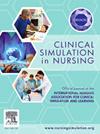探讨三种模式的临床教育的准护士学生和过渡到实践在农村设置的影响
IF 2.5
3区 医学
Q1 NURSING
引用次数: 0
摘要
教育教学模式最近发生了变化。临床学习环境比较调查(CLECS 2.0)提供了深入了解护理教育模式的影响及其对护理学生准备过渡到实践的影响。研究小组探索了传统的临床经验,以及在护理专业学生毕业6个月及以上的过渡到实践中的模拟、面对面模拟和基于屏幕的模拟的应用。方法采用CLECS 2.0定量调查研究方法,对护理研究生的传统临床经验和模拟学习机会进行比较。使用素质调查,261名新护士通过电子邮件招募。结果护理专业毕业生在毕业后至少6个月接受调查。90名参与者完成了调查,所有受访者都接受了传统的临床体验、面对面模拟和基于屏幕的模拟。结果表明,学生们认为传统的临床经验是最有益的,其次是面对面的模拟,基于屏幕的模拟的总体得分最低。结论新护士认为传统的临床和面对面的模拟学习经验是向实践准备过渡的影响因素。基于屏幕的模拟缺乏对实践准备的适用性,但有助于培养批判性思维。本文章由计算机程序翻译,如有差异,请以英文原文为准。
Exploring three modalities of clinical education for prelicensure nursing students and the impact on transition to practice in rural settings
Background
Educational pedagogical modalities have shifted recently. The Clinical Learning Environment Comparison Survey (CLECS 2.0) offers insights into the impact of nursing education modalities and their influence in preparing nursing students for the transition to practice. The research team explored traditional clinical experiences and the use of simulation, in-person/face-to-face simulation, and screen-based simulation in the transition-to-practice for nursing students six months or more after graduation.
Methods
The CLECS 2.0, a quantitative research survey research approach, was utilized to compare traditional clinical experiences and simulated learning opportunities for postgraduate nursing students. Using the Qualtrics survey, 261 novice nurses were recruited via email solicitation.
Results
Nursing graduates were surveyed at least six months postgraduation. Ninety participants completed the survey, all respondents were exposed to traditional clinical experiences, face-to-face simulation and screen-based simulation. Results suggest students felt traditional clinical experiences were the most beneficial, followed by in-person simulation, with the lowest overall scores in screen-based simulation.
Conclusion
Novice nurses identified traditional clinical and face-to-face simulation-based learning experiences as influential factors in the transition to practice readiness. Screen-based simulations lacked applicability to practice readiness but were helpful in developing critical thinking.
求助全文
通过发布文献求助,成功后即可免费获取论文全文。
去求助
来源期刊

Clinical Simulation in Nursing
NURSING-
CiteScore
5.50
自引率
15.40%
发文量
107
期刊介绍:
Clinical Simulation in Nursing is an international, peer reviewed journal published online monthly. Clinical Simulation in Nursing is the official journal of the International Nursing Association for Clinical Simulation & Learning (INACSL) and reflects its mission to advance the science of healthcare simulation.
We will review and accept articles from other health provider disciplines, if they are determined to be of interest to our readership. The journal accepts manuscripts meeting one or more of the following criteria:
Research articles and literature reviews (e.g. systematic, scoping, umbrella, integrative, etc.) about simulation
Innovative teaching/learning strategies using simulation
Articles updating guidelines, regulations, and legislative policies that impact simulation
Leadership for simulation
Simulation operations
Clinical and academic uses of simulation.
 求助内容:
求助内容: 应助结果提醒方式:
应助结果提醒方式:


